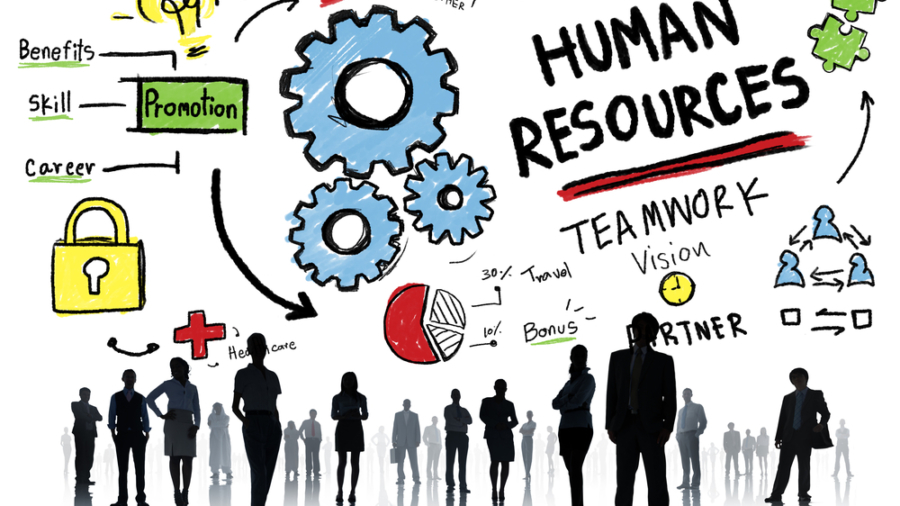When most people think about artificial intelligence (AI), they imagine something like a robot that can learn, possibly to humankind’s detriment. However, these days, AI is already becoming integrated into our daily lives, albeit much less drastically than an army of androids taking our jobs.
While artificial intelligence has already demonstrated a lot of potential across multiple functions, today, we’re going to focus our attention on one particular industry – human resources (HR).
The Current State of AI in Human Resources
On the surface, it seems a little ironic that computers would be taking over elements of a job that’s all about human interactions, but when you dig a little deeper, it actually makes a lot of sense.
In fact, relying on AI for data management and analysis enables HR personnel to spend more time interacting with people, meaning that technology is helping bring people together, not tear them apart. Let’s see how it works.
Addressing Employee Questions
There are certain times of year that everyone is clamoring for time with their favorite HR generalist (i.e., Performance Reviews, Annual enrollments). And for many HR generalists, the same questions are asked over and over again, though perhaps phrased a bit differently. Well, enter the Virtual Assistant (or Chatbot or Virtual Agent)!
No matter what you call it, Virtual Assistants (VA) have been designed to understand human language using artificial intelligence. These VA’s can be trained to understand multiple variations of particular questions and offer prescribed answers to help address employee’s needs promptly and accurately. In addition, VA’s do not require sleep or rest, so if an employee needs help at 1 am, their VA is ready and willing to assist.
Already organizations are deploying VA’s to help employees answer questions concerning health insurance needs, freeing up valuable resources to address higher priority tasks.
New Age of Recruitment
When trying to sift through dozens (or hundreds) of new hire applications, much of that time is wasted. Either you’re spending time looking at candidates who don’t fit your needs, or you are taking significant time categorizing those that are qualified. This does not include the time necessary to correspond with potential candidates and secure interview times.
What if a computer system could handle all of that for you? While it is not recommended that you solely rely on an AI to choose your next hire, AI can help narrow the field by looking at keywords in a cover letter or resume (using techniques such as Natural Language Processing – NLP) and comparing them to the job description. AI has also been used to help augment your job description so that it’s more accurate to what the position entails. Over time as the system is able to collect more data, the predictive models will improve in accuracy.
With AI, recruiting new people is no longer a time-consuming hassle. It can be streamlined, and allow you to find qualified applicant in a fraction of the time.
Operational Efficiency
As you can see, there are numerous ways that organizations are already applying artificial intelligence to the workplace. Not only does it have the potential to effectively address employee questions and improve the efficiency of the recruitment process, but it can optimize many HR operations as well.
The data-entry or analysis task being performed manually (i.e., managing an employee’s profile, filling out paperwork, quarterly employee surveys) can all be done with AI. What can you do with this kind of power?
Predictive Models
The other side of artificial intelligence (and potentially its most powerful side) is that it can help you make predictions and proactively address issues. In human resources, this can be done by analyzing data about particular employees and optimizing their workflow. You can predict how well an employee will do on a particular task, as well as pair groups based on how well they work together to optimize their performance even more.
Predictive models using advanced analytics techniques like Machine Learning or Deep Learning do require large amounts of data. This data could come in the form of surveys and questionnaires, but also could be gathered based on internal tools (i.e., compensation tools, CRM databases, learning management systems). Companies are already beginning to leverage these internal sources of data to help improve employee engagement and overall employee satisfaction.
Overall Benefits of Artificial Intelligence in HRTech
Remove Bias: if done properly, AI has the potential to remove bias that may have been historically impacting disadvantaged populations. People can advance or prosper based on merit, not personal prejudice.
Optimize Work Environment: when you optimize how people interact with each other based on AI models, you have the potential to increase productivity and creativity.
Enable More Human Interactions: rather than spending hours transcribing data and entering forms, HR generalists can spend more time engaging staff and supervisors to ensure tools and resources are being leveraged to create a supportive workplace.
Downsides of AI
While artificial intelligence has a lot to offer, it’s far from perfect. Let’s look at a few of the drawbacks of implementing this technology.
Still Learning: even the most advanced programs are only as capable as the training data that was used to train them (garbage in, garbage out). Generalized AI is not possible yet, so there are many limitations, and you do have to supervise the process a lot of the time.
Over-reliance on AI: at this stage, information that is provided by a cognitive system, like a prediction or recommendation, is just information. People with their vast amounts of experience and context are still necessary to fulfill the gap in judgment that AI systems lack.
Bottom Line
Overall, AI in “human” resources may sound like an oxymoron, but it’s the wave of the future. As HR technology continues to improve, you can expect to see more of these programs installed and implemented in workplaces around the world.

